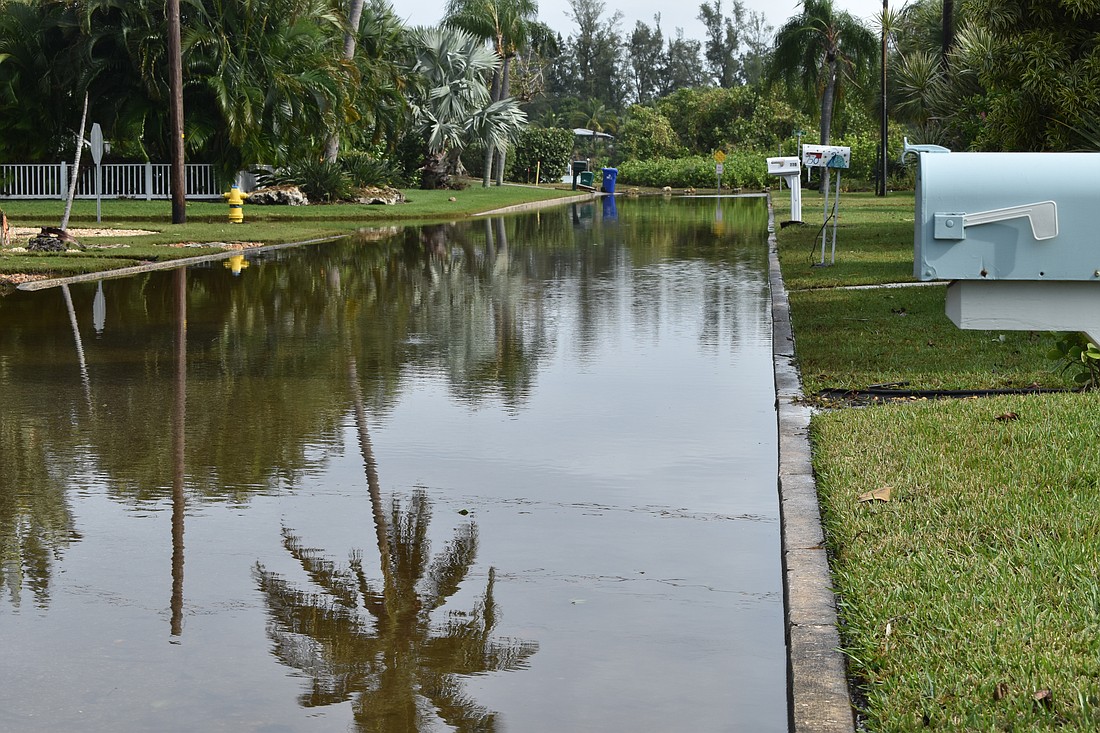- April 25, 2024
-
-
Loading

Loading

The town of Longboat Key has been equipped with actions to consider for years to come as sea-level rise threatens the health and safety of the barrier island and its residents.
The recommended actions are part of a four-phase study that the town asked APTIM Environmental and Infrastructure to complete in 2018.
The town specifically asked the environmental consultant to provide a practical, high-level overview of impacts from sea-level rise and recurrent flooding and develop recommendations for adaptation, according to the staff memo.
The consultant developed a four-step approach:
Phase 4, the comprehensive adaptation plan, is said to act as a road map for future town capital improvement projects and operations planning, pursuit of grant funding and as a guidance document for any future changes to the town code.
“(The plan) is intended to be easy to use and something that gets revisited over time and updated, a living document,” said APTIM Climate and Coastal Resilience Lead Samantha Danchuk. “The plan overall is intended to be best practices, administrative actions for town staff to implement as well as really useful information for the public so that they too can adapt over time to sea-level rise.”
All other phases have been completed and updates have been given to the commission following each phase.
The bulk of the update was given to the commission at the March 20 regular workshop and focused on the Sea Level Rise and Recurring Flooding Resilience Plan and Capital Plan recommendations.
The resilience plan features 25 actions to be implemented over the next five, 10 and 20 years, but no actions were deemed as immediately necessary. Actions in the plan were organized by six objectives including:
“We know as sea level rises, it’s not going to be a perfect curve,” Danchuk said. “It’s going to be maybe a step function, come up really fast and then it stays the same for a while.”
One of the actions included in the plan was installing tidal valves. Sleepy Lagoon, Longbeach Village, Emerald Harbor, Spanish Main, Buttonwood Harbour and blocks 4400 to 5300 of Gulf of Mexico Drive were identified as priority areas for the valves. The installation was categorized as a near-term objective, or one that is recommended within the next five years.
In 2018, Public Works installed WaStop Inline Check Valves in Longbeach Village, but five years later flooding is still an issue.
The WaStop valves are a type of tidal valve. The valves are a flexible, hollow, cone-shaped barrier with its apex facing inward and upward. When stormwater fills the pipe, the pressure lifts the bottom of the barrier, allowing the stormwater out. When the tide rises above the valve, water fills the sealed, hollow barrier, stopping it from flowing inward.
Because of still present flooding issues where the valves have already been placed, commissioners asked town staff to look into other brands of valves and additional maintenance of existing ones to ensure they are operating at their best.
The presentation also provided cost estimates for each set of projects. For projects recommended over the next five years, APTIM estimated $1.8 million in annual costs. For projects over the next five to ten years, $1.6 million is the estimated annual cost. All projects for the 20 years and up time period will cost about $2.6 million annually.
The town is eligible to seek state grant funding to cover associated costs and APTIM provided examples of sources, which include Florida Department of Environmental Protection Resilient Florida Implementation Grants and Coastal Partnership Initiative Grant Program.